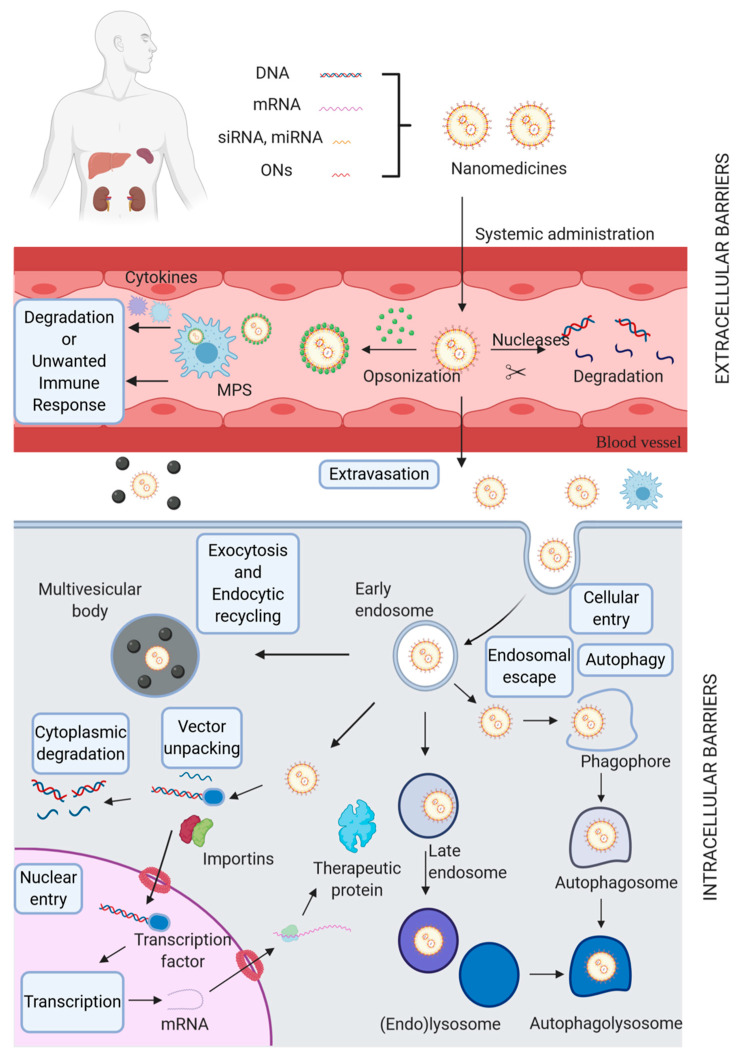Figure 1.
The biological barriers for non-viral gene delivery systems. Nucleic acids (e.g., DNA, mRNA, siRNA, miRNA, and oligonucleotides (ONs)) are usually incorporated into nanoparticles (NPs) to modulate protein expression levels. Extracellular (EC) barriers include: (i) the clearance through the kidney, liver, and spleen; (ii) the mononuclear phagocyte system (MPS), activated through the opsonization of the nanoparticles, with nucleases degrading the genetic cargo and finally, (iii) extravasation. Once EC barriers are circumvented, NPs must face intracellular (IC) barriers: Firstly, the plasma membrane must be crossed, usually by endocytic pathways, to ensure cellular entry. Next, NPs are encapsulated into an endosomal vesicle, which keeps them physically separated from the cytosol. Endosomal routes must be suppressed to avoid the lysosomal action responsible for degrading the internalized cargo and consequently its inability to gain access to the cytosol. Another challenge includes avoiding being recycled back to the EC environment. Once the cytosol is reached, the internalized NPs face autophagy and cytoplasmic degradation. Finally, pDNA must overcome the nuclear envelope to be delivered into the nucleus. Figure based on the work of Vermeulen et al. and Okholm et al. [12,13]. Created with BioRender.com.

